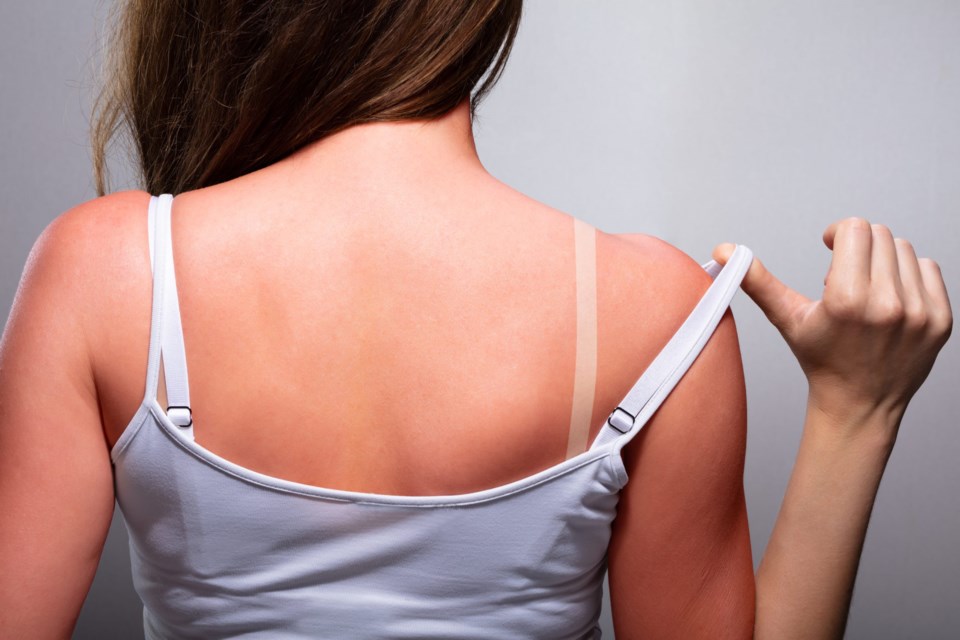Summertime is here and we all want to take all the opportunities to have some fun in the sun with family and friends. As much as we all love spending time in the sun, nothing can ruin the perfect summer’s day quicker than a nasty sunburn.
According to the American Acaddemy of Dermatology Association, studies show a history of sunburns in youth can increase the risk of developing cancer later in life. Skin cancer is one of the most prevalent cancers with one in five Americans developing skin cancer in their lifetime.
“Skin cancer is the most common cancer in the United States,” said Jonathan Richey, a dermatologist on the medical staff at Baylor Scott &White Medical Center - McKinney, quoting the American Academy of Dermatology. “Nine-thousand and five hundred people in the U.S. are diagnosed with skin cancer every day.”
So, it is incredibly important to take precautions now to protect yourself and loved ones in the future. Luckily, the skilled and experienced dermatologists at Baylor Scott & White Health are here to offer insight on how to keep the summer fun and your skin safe for years to come.
Protect yourself
Seeking shade will protect you from cancer-causing ultraviolet (UV) rays in the sun’s light, according to Dr. Richey says you can seek shade under trees and shade structures, like umbrellas or create your own shade.
“Create your own shade using clothing that covers exposed areas, like hats that cover your face, head, ears, and neck, and sunglasses that wrap around and block both UVA and UVB rays and sunscreen is for the reflective light we encounter off buildings, cars, sidewalks, walls, and water,” says Dr. Richey.
Sunscreen is an important element of skin protection in the summer. It should be broad spectrum, water resistant, and 30 SPF or higher, according to Dr. Khan Tran, a dermatologist on the medical staff at Baylor Scott & White Medical Center - Centennial. To further protect your skin, avoid tanning beds and conduct regular self-examinations of your skin or your loved one’s skin.
When to be concerned and what to do
Since skin cancer is quite common, even with several methods of skincare and protection, it is still important for you to regularly check your skin. The process can be daunting and even a little scary.
“You should consider seeing your doctor or a dermatologist when a mole changes in color, shape, or size. In addition, moles that bleed, itch, or are tender should be checked,” says Dr. Tran.
When self-examining the mole, Dr.Richey suggests that you use the ABCDE acronym which can help identify a deadly form of skin cancer called melanoma.
“The ABCDEs of moles can help determine whether a mole might be suspicious for skin cancer. Each letter stands for something to evaluate during a skin exam,” says Dr. Tran, “A is asymmetrical shape, B is border, C is color, D is diameter, and E is evolution or evolving.”
Using the ABCDE acronym, dermatologists look for changes or abnormalities in these characteristics of the moles. Harmless moles, benign moles, often stay the same shape, color, and size with a single consistent border, according to Dr. Tran.
“Moles that don’t have that benign characteristic may still be harmless, but they should be prioritized as they may be at higher risk,” said Dr. Tran.
Know your risk
If there is a family history of skin cancer, make sure to get as much information as you can about it, like the specific type of skin cancer, the age of diagnosis, and the treatment of the cancer, said Dr. Tran.
You should also be aware of your risk, according to Dr. Tran.
“Your primary care physician will want the following information about your skin cancer risk: a previous history of severe or frequent sunburns, conditions that weaken the immune system, ultraviolet light exposure history, smoking history, and chemical and radiation exposure,” said Dr. Tran.
All of these elements can impact your risk for skin cancer. Skin cancer is not something to be taken lightly. According to the American Academy of Dermatology, about 20 people die from melanoma everyday. More than one million Americans are living with melanoma today, the skin cancer that causes the most skin-cancer related deaths, says the American Academy of Dermatology.
So, as you begin to map your memory-making summer, keep in mind the importance of skincare and protection. Now is a time for memories, not for regrets. A fantastic summer can be followed by a cloud of worry if you leave skincare and protection outside of your summer plans. This summer, don’t let your fun be cut short. Take the precautions, self-examine, and, when in doubt, trust Baylor Scott & White Health and go see a doctor.
Physicians provide clinical services as members of the medical staff at one of Baylor Scott & White Health’s subsidiary, community or affiliated medical centers and do not provide clinical services as employees or agents of those medical centers or Baylor Scott & White Health.




